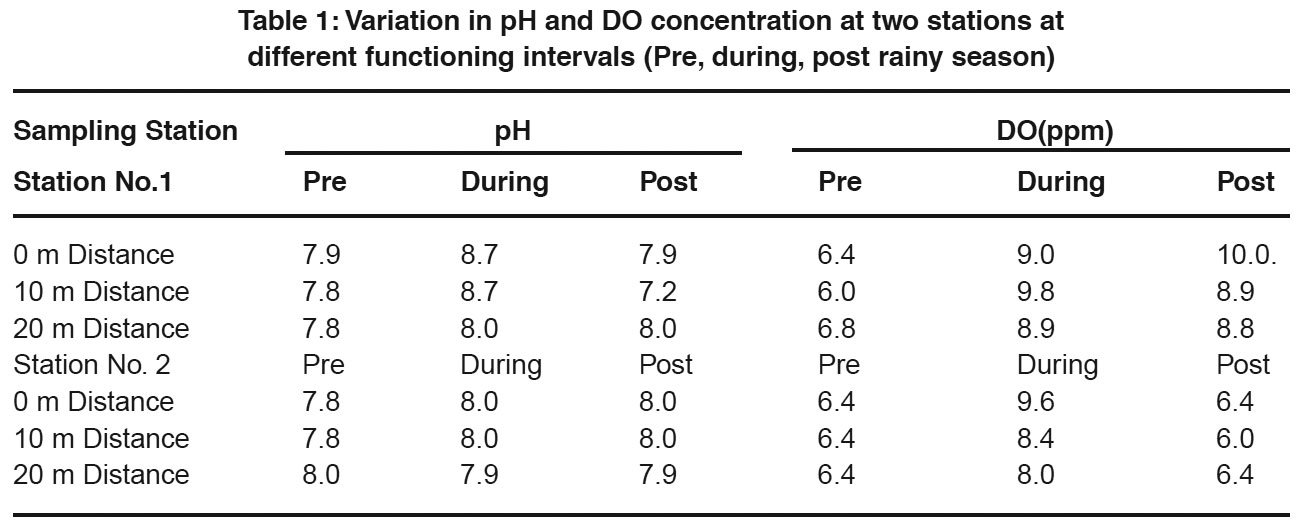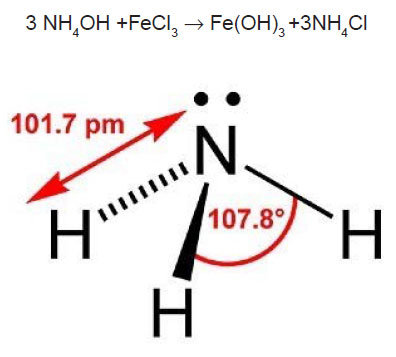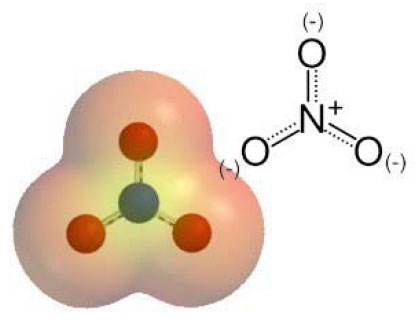The physico-chemical characteristics of water quality of Narayan Talab, Satna (M.P.) India
K.B.L. Shrivastava1 * and S.K. Pandey2
DOI: http://dx.doi.org/10.12944/CWE.4.1.22
Due to sewage, agricultural and industrial wastes,abnoxious emissions and anthropogenic activities, the freshwater bodies around the world are becoming polluted The water body selected for this study is Narayan Talab of Satna, the District head quarter in Madhya Pradesh, India. The Narayan Talab is one of the important sources of potable water supply for the Satna city. The Talab receives a large amount of domestic wastes, sewage and industrial effluents. It has floating lotus flowers, which are very useful in improving the Talab’s water quality. The effluent of water treatment plant of P.H.E. is also connected through this talab bringing some trace metals and chlorides in it. Authors examined physicochemical parameters like pH, dissolved oxygen, biochemical oxygen demand, and chemical oxygen demand to ascertain the water quality of this talab.Chemistry of Sarpat plants as well as chemistry of other chemicals and their effect on water quality is also studied.
Copy the following to cite this article:
Shrivastava K.B.L, Pandey S.K. The physico-chemical characteristics of water quality of Narayan Talab, Satna (M.P.) India. Curr World Environ 2009;4(1):143-147 DOI:http://dx.doi.org/10.12944/CWE.4.1.22
Copy the following to cite this URL:
Shrivastava K.B.L, Pandey S.K. The physico-chemical characteristics of water quality of Narayan Talab, Satna (M.P.) India. Curr World Environ 2009;4(1):143-147. Available from: http://www.cwejournal.org/?p=917
Download article (pdf)
Citation Manager
Publish History
Select type of program for download
| Endnote EndNote format (Mac & Win) | |
| Reference Manager Ris format (Win only) | |
| Procite Ris format (Win only) | |
| Medlars Format | |
| RefWorks Format RefWorks format (Mac & Win) | |
| BibTex Format BibTex format (Mac & Win) |
Article Publishing History
| Received: | 2009-03-05 |
|---|---|
| Accepted: | 2009-04-12 |
Introduction
Water resources in India have reached a point of crisis due to unplanned urbanization and industrialization (Singh, Pathak, & Singh, 2002). Urban water bodies receiving external pressure from human settlements adversely affect nearby aquatic ecosystems. Urbanization has direct negative impacts on water bodies (Khan, Bhatnagar, & Saxena, 1988). Satna district abounds in minerals like calcium, iron, aluminium and silicon and their concentration in water has been reported to be positive and in some cases touching the alarming limit of W.H.O. Several industries are set up in this region, prominent among them are lime and cement factories contributing inorganic and organic pollutants. Use of detergents by washer men as well as by washing four wheelers makes the water alkaline in nature Organic enrichment of the talab through floral offerings, idol immersion, and decomposition of aquatic weeds are also the significant causes of its eutrophication.Enemous growth of Sarpat Plants also cause eutrophication of the Talab. Denting and Painting of four wheelers at its northern bank as well as domestication is also a cause of heavy metals concentration and direct domestic sewage discharge in it .
Methodology
The samples were collected from a depth of 1ft below the surface using Nansen type water sampler and kept in polythene containers (500 mL) with the addition of 2 mL concentrated HNO3 at 2 mL in order to preserve the metals and also to avoid precipitation. The pH of water samples was determined using pH-meter with electronic glass electrode (LI 127 of Elico, India) and conductivity was measured by conductivity-meter (Systronics 304).
For the analysis of total heavy metals (dissolved and suspended), water (200 mL) samples were digested with 5 mL of di-acid mixture (HNO3: HClO4 :: 9: 4 ratio) on a hot plate and filtered by Whatman No. 42 filter paper and made up the volume to 50 mL by double distilled water for analysis of heavy metals using atomic absorption spectrophotometer (GBC-902, Australia), APHA (1995).
Dissolved Oxygen
Dissolved oxygen was fixed instantly on the spot and analyzed immediately as per the Winkler’s method with Azide modification (De, 2002).
Biochemical Oxygen Demand (BOD)
BOD was determined as per standard method (De,2002).
Chemical Oxygen Demand (COD)
COD was determined by potassium dichromate open reflux method.
The study area selected is Narayan Talab Satna located in the Satna city,in Madhya Pradesh, India (latitude 240 35’ N, 800 50 ’ E. longitude 240 58 ’N and 800 83’ E). The Narayan Talab has an area of 3 acres and a catchment area of 360000sq.m.
Results and Discussion
pH
PH ranged from 7.2-7.9 and 7.8-8.0 in the surface layer at stations 1 and 2 respectively (Table1). The USPH (United States Public Health Standards) limits of pH for drinking water are 6.0-8.5 (De, 2002, pp245-252). The values obtained were on the higher side of normal. Higher pH values of surface water were explained on the basis of increased photosynthetic activity of the algal bloom, the carbonates of calcium and magnesium are precipitated from bicarbonates and water becomes more alkaline. pH controls the chemical state of many nutrients including dissolved oxygen, phosphate, nitrate, etc. (Goldmann & Horne, 1983). It regulates most biological processes and biochemical reactions.
 |
Table 1: Variation in pH and DO concentration at two stations at different functioning intervals (Pre, during, post rainy season) Click here to view table |
Dissolved Oxygen (DO)
DO concentration of water body in the range of 6.0-9.8 and 6.0-9.6 ppm were obtained in surface layer of the station 1 and station 2. The maximum increase in the DO was recorded during the rainy season as shown in Table 1.The value of DO was found low, mostly at the bottom layer on account of lower production of oxygen and higher consumption of DO by microbial activities (Tamot & Bhatnagar, 1988). DO is one of the most important parameters to study the quality of water. It is required for the metabolism of all aquatic organisms. It acts as an indicator of the magnitude of eutrophication. In natural water resources the concentration of dissolved oxygen depends upon the physical, chemical and biological activities prevailing in the water body.
 |
Table 2: Variation in BOD, COD, iron, zinc and lead concentration at the two stations at Pre, during and Post Rainy season Click here to view table |
Biochemical Oxygen Demand (BOD)
A range of 11.0 -14.0 and 16.0-28.2 ppm were obtained at stations 1 and 2 respectively (Table 2). The minimum value of BOD was recorded at the surface layer during the functioning period of the aeration units. BOD indicates the presence of microbial activities and dead organic matter on which microbes can feed. BOD is directly linked with decomposition of dead organic matter present in the talab & hence the higher values of BOD can be directly related with pollution status of the lake (WQM, 1999). An inverse relationship was found between the dissolved oxygen concentration and biological oxygen demand values (Coscun, Yurteri, Mirat, & Gurolet, 1987).
Chemical Oxygen Demand (COD)
COD indicates the pollution level of a water body as it is related to the organic matter present in the talab (1999). COD concentrations in the range of 20-68 and 32-48 ppm were obtained in the surface layer of stations 1 and 2 respectively (Table 2).
The botanical name of sarpat plant is Acorus gramineus which is an evergreen perennial growing plant of height 0.5m to 1.5m.The plant has antispasmodic, digestive and diuretic activity. This plant can influence the pH of the water. During the hours of daylight, plants produce nutrients directly from carbon dioxide dissolved in the water and the energy obtained from sunlight, a process known as photosynthesis.
As a consequence of photosynthesis the plants utilize carbon dioxide in the day time and remove this from the water causing alkaline carbonates and bicarbonates to predominate in the water and the pH to rise. The pH of the water can fluctuate quite dramatically through a 24 hour period.
6CO2 +6H2O → C6H12O6 +6O2
Ammonia originated from the dead and decaying plant material in the pond or from uneaten food remains dissolved in water as ammonium hydroxide and causes precipitation of metals in water therefore metallic concentration in water increases in the form of suspended solids. Some soluble metal complexes are also formed . Oxidation of water by Sarpat plant increases complex forming ability of water.

Nitrate is the final product from the breakdown of ammonia which is a potent plant fertilizer and can contribute to the growth of Sarpat plant.Higher concentration of nitrate in water causes cancer to human. The higher the pH and water temperature the greater percentage of the ammonia which exists in its harmful free form. Concentration of iron as per Indian and WHO standards are 1 ppm but concentration of iron in this Talab is more than these limits. Concentration of lead is within the limit other wise it is toxic.It is a general protoplasmic poison.Lead inactivates delta- aminolevulinic acid and obstructs its conversion to porphobilinogen and retards heme synthesis.Heavy metals also oxidize organic substances causing decrease in DO value of water.

HOOCCH2CH2 COC(NH2)COOH (DELTA AMINOLEVULINIC ACID)
Conclusion
The sewage from domestication and decomposition of Sarpat Plants are the main causes of increase value of BOD & COD. Heavy metals like iron, zinc & lead are accompanied due to denting & painting of four wheelers on its northern Bank .Iron is also prevailing due to latterite found in the earth crust of this region. Alkalinity in water is mostly due to use of detergents by washermen as well as by the washing of four wheelers in the Narayan Talab.Chloride concentration is also possible due to sewage from PHE treated water. Eutrophication of the Narayan Talab is happening rapidly due to binding of clay & soil by abundantly growing Sarpat Plants and dissolution of soil and dust by washing four wheelers in the Narayan Talab. Therefore washing of four wheelers in the talab should be banned. The growth of Sarpat Plants should be stopped by cutting them from the root, which will prevent Eutrophication of the Narayan Talab.Municipal wastages dumped near the pond contains plenty of dead and decayed organic substances and several inorganic chemicals which are the major sources of ammonia and nitrate contamination in water of Narayan talab.
References
- American Public Health Association., Standard methods for the examination of water and wastewater (10 th ed.). Washington D. C.: American Public Health Association (1985).
- Coscun, I., Yurteri, S., Mirat, T., & Gurol, D., Removal of dissolved organic contaminants by ozonation. Environmental Progress, (1987) 6(4): 240-244.
- Khan, A.A., Bhatnagar, B., & Saxena, R., An introduction of Bhopal Lakes. In S.K. Kulshreshtha (Ed.), Proceedings of NationalSymposium, Present Past and Future of Bhopal Lakes. Bhopal: Department of Zoology (1988).
- Tamot, P. & Bhatnagar, G.P., Limnological studies of upper lake Bhopal, In S.K. Kulshreshtha, (Ed.). Proceedings of National Symposium, Past Present and future of Bhopal Lakes. Bhopal: Department of Zoology (1988).
- Welch, P.S., Limnology. New York: McGraw Hill Pani, 9703-054,Jain Sanjeev,Gupta S.K.,Salman S.(Barkatullah Univ. Dept. Bhopal-462026). Seasonal change in heavy metals in water and sediments of an eutrophic lake,Indian J-Environ. Sc.. (1996) Part-16(3): 197-202.
- Singh,Yamuna & Dubey D.P., Analysis of pumping test data from Vindhyan Aquifiers in Rewa Centeral India & it implication for ground water supply Journal of India Academy of Geoscience (1998) 41(1): 57-60.
- Baruah,B.K., Water quality Ponds in Chandrapur area of Kamarup distt. Assam Environ. Ecology (1998) 16(2): 254-256.
- WQM Report., Annual report on water quality monitoring of upper and lower lakes Bhopal. Volumes I and II (1999).
- S. & Mishra, S.M., Impact of hydraulic detention on water quality characteristics of a tropical wetland (Lower Lake). In P. Shrivastava (Ed.), Environmental pollution and its management. New Delhi, India: ABS Publication (2000).
- Mishra Sanjay., Some studies on water pollution due to mining activities around mining areas of Sahdol (M.P.) (2001).
- De, A.K., Environmental Chemistry (4 th ed), New Delhi, India: New Age International Publishers (2002).
- Singh, S.P., Pathak, D. & Singh, R. Hydrobiological studies of two ponds of Satna (M.P.), India. Ecology, Environment and Conservation, (2002) 8(3): 289-292.
- Impact of agricultural modernization on socio-economic status of farmers of Satna Distt. By Sashank Lenka & A.Das Indian Journal of soil conservation, (2003) 20(3).
- Jahed Khaniki Gh. R.*, Dehghani M.H., Mahvi A.H., Rafati L. and Tavanafar F. R.J. of Chem. & Env. (2008) 12(4).
- Chandraju S., Basavaraju H.C. Chidan Kumar C.S., Investigation of impact of irrigation of distillery spent Wash on the Growth Yield and Nitrients of Leafy Vegetables. Chem. Env. Res. (2008) 17 (1&2).






